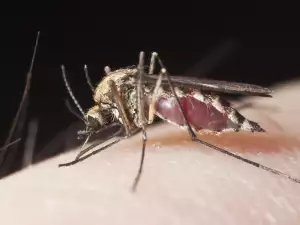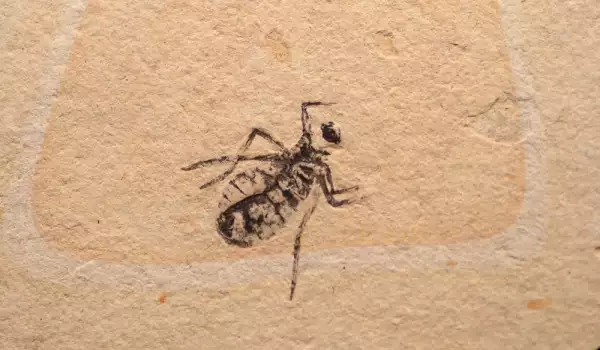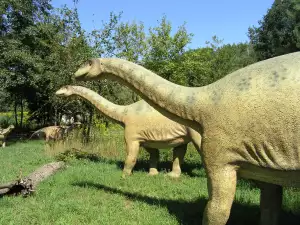Fossils of a bloodsucking insect, once inhabiting lakes during the Jurassic period and attacking salamanders, were uncovered by a group of paleontologists.
The fossilized parasite was found in Northeast China and is in essence the larva of a fly which existed 165 million years ago. Scientists have called it Jurassica qiyia. The insect reached a length of 1". The larva underwent a serious metamorphosis, in order to transform the insect's body into a kind of syringe.
The head of the larva is relatively small when taking its large body into consideration, which resembles a caterpillar. The fly inhabited freshwater lakes, which were also occupied by creatures which looked like present day salamanders. The insect would land on the amphibians and suck their blood.

"Today you cannot find an insect with a body of similar form, " says Dr. Bo Vang from the University of Bonn, Germany.
The researchers found fossils of salamanders with parasites all over their bodies in the mud. In the lakes where representatives of Jurassica qiyia attacked their victims, there were no fish, only amphibians, which is why there were plenty of their fossils found in that area of China.
"The Jurassica qiyia flies lived undisturbed, since there were no predators to threaten them. However, they have no link to the disappearance of the contemporaneous salamanders, since the parasite rarely killed its host, " explained Dr. Bo Vang.
Insects were the first creatures to learn how to fly. They wound up in the air 90 million years before the first vertebrates took flight. Scientist suggest that insects appeared in the early Devonian (410 million years ago). Paleontologists, however, are not unanimous about who their ancestors were.
According to some experts, insects descended from centipedes. Contrarily, years ago, thanks to genetic analysis, American biologists proved that it is possible for insects to have descended from crustaceans. According to another hypothesis, insect wings developed from the gills of sea creatures once they came on to dry land.










